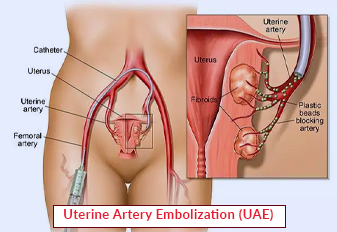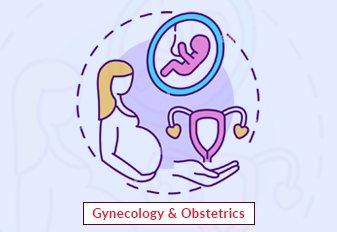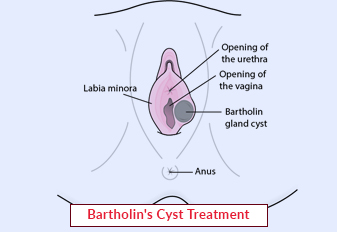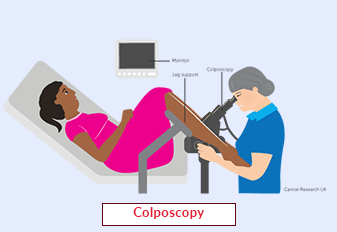Uterine Artery Embolization (UAE)

Uterine Artery Embolization (UAE) is a minimally invasive procedure used to treat various uterine conditions. This non-surgical intervention involves blocking the blood supply to the uterus, leading to the shrinkage of uterine fibroids or other abnormal growths. UAE offers a viable alternative to traditional surgical treatments, such as hysterectomy or myomectomy. In this article, we will explore the concept of UAE, its significance in treating uterine conditions, and the procedure involved in this innovative technique.
Book an AppointmentAbout Uterine Artery Embolization (UAE)
Uterine Artery Embolization (UAE) is a procedure that aims to treat conditions such as uterine fibroids, adenomyosis (thickening of the uterine wall), and postpartum hemorrhage. It involves selectively blocking the blood vessels that supply blood to the uterus, reducing blood flow to the targeted area. By depriving the abnormal tissue of its blood supply, UAE leads to the shrinkage and eventual resolution of the uterine condition.
Procedure of Uterine Artery Embolization (UAE)
-
Preoperative Assessment: Before the UAE procedure, a thorough evaluation of the patient's uterine condition is conducted. This typically includes a comprehensive medical history, physical examination, and imaging tests such as ultrasound or magnetic resonance imaging (MRI).
-
Anesthesia: UAE is typically performed under conscious sedation or general anesthesia, depending on the patient's preference and the healthcare provider's recommendation.
-
Accessing the Uterine Arteries: A small incision is made in the groin area, and a catheter (a thin, flexible tube) is inserted into the femoral artery. Guided by imaging techniques, the catheter is advanced to reach the uterine arteries.
-
Embolization: Small embolic particles, typically made of tiny beads or gelatin sponge, are injected through the catheter and into the uterine arteries. These particles block the blood vessels, reducing blood flow to the uterine tissue.
-
Monitoring and Recovery:
-
After the procedure, the patient is closely monitored to ensure stability. Pain medications and anti-inflammatory drugs may be prescribed to manage discomfort and cramping.
-
Most patients are able to return home the same day or the following day, with specific instructions regarding recovery, pain management, and follow-up appointments.
-
Require Assistance?
Get A Quick Callback From Our Healthcare Experts






